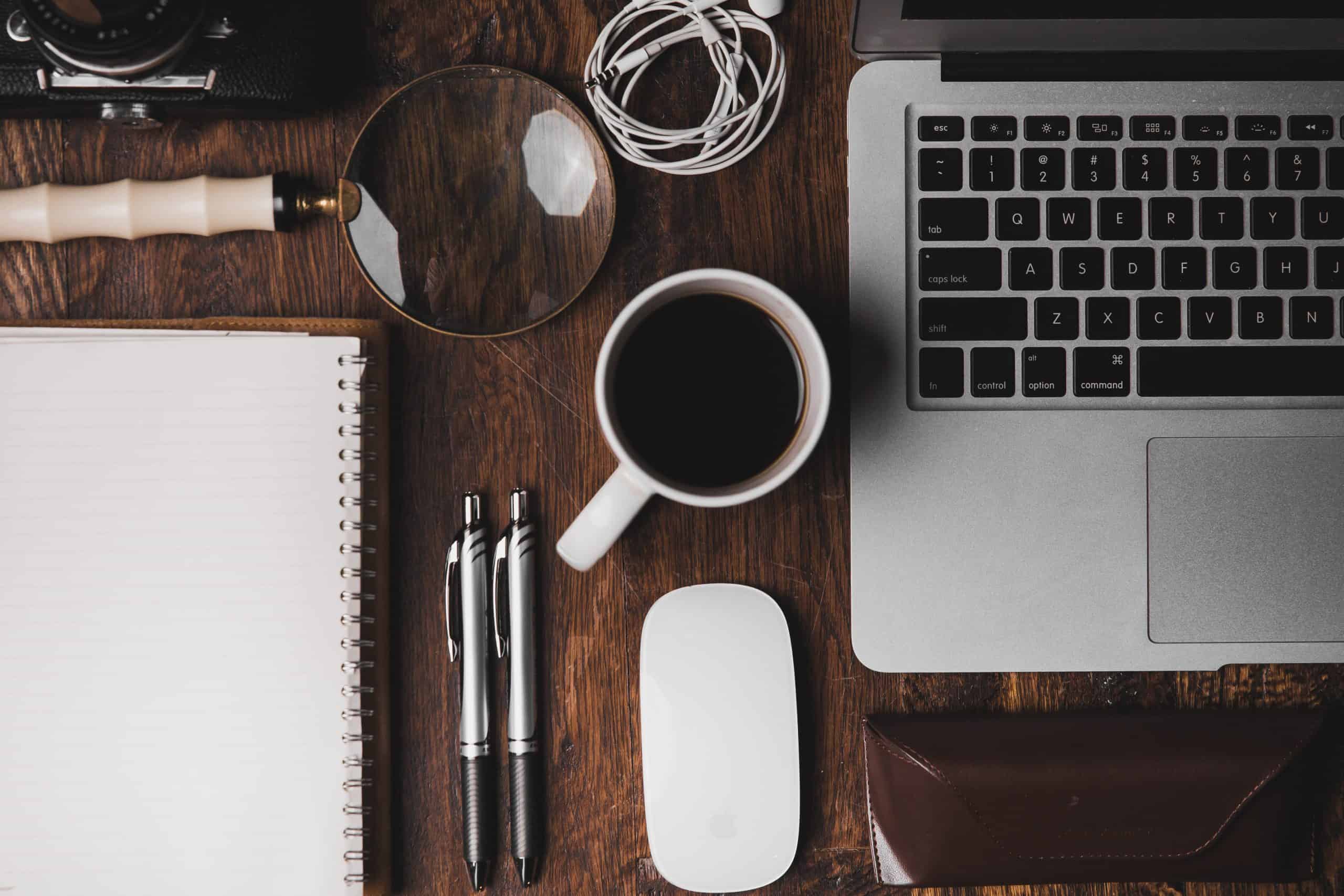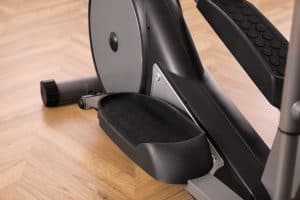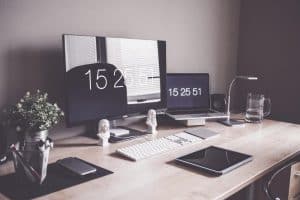Working may not be the most enjoyable activity, but we still have to do it almost every day. No one ever gets super excited about work, and that’s completely understandable. This is exactly why it’s essential to find ways to keep ourselves motivated. A perfect work environment with the most optimal conditions can help us start our tasks without much delay.
This is where an organized desk comes in. A well-organized desk can do more for your mood and your performance than you might think. There’s certainly an art to keeping everything in the right place and keeping things that aren’t always used out of sight. However, it’s fairly simple and affordable if you know what to do, so if you’re working in a messy environment and want to learn the efficient way to tidy up, you’re at the right place.
In today’s article, we’re saying goodbye to messy desks as we’ll be talking in-depth about how to set up your desk at work. We’ll also share our tips on how to set up your desk in the most efficient way, and we’ll include some tips if you have a small desk as well.

How to Set up a Desk
You may be thinking: “why is it important to set my desk the right way” but the answer is simple: even looking at a mess or clutter is tiring for our brains, according to Princeton University. An unorganized space may cause us to lose our focus more frequently, and this obviously isn’t an ideal scenario for working.
In fact, a study even suggests that we’re able to interpret facial expressions and emotions less accurately when the environment is messy, and there’s clutter in the background. If this is the case, how are we expected to be at our 100% with a messy desk when we can’t even communicate properly with our colleagues?
Whether you’re setting up your desk for the first time or you want to declutter your desk and organize it efficiently, our tips will help you with everything you need to know.
Decluttering for the Win
When it comes to your desk set-up, decluttering may be the most important keyword. It helps you keep your work environment efficient and presentable at the same time. You might have a lot of stuff on it that you don’t actually need or touch for ages!
You can do a simple exercise to find out what objects/tools are an absolute must on your desk.
First, you clean out your entire desk and put everything inside a drawer or a file cabinet close by. Then, you take out only the things you need, when you need them. Keep this up for a day or two, and you’ll find out what items you’re using the most frequently. You can then keep these items on your desk and leave the rest inside your desk drawer or cabinet.
Additionally, if you find yourself hoarding office supplies like paperclips or staplers on your desk, take note of how much you use and try to keep the amount you need in your drawers, and put the rest inside the supply closet/cabinet where they belong.
Lastly, to set a clean-looking desk, you can also utilize hooks that you can attach underneath your desk. Command Jumbo Utility Hooks, Damage Free Hanging Wall... can be easily found online and are pretty useful for hanging your headphones or purse. You can even hang small pouches on them to put away more items.
Keep It Personal, But Not Too Much
You may be asking what happens to the items that are not for practical use when you use the above-mentioned method, and you have a point. In a work setting, even if some things are not useful to us in a conventional way, the mere act of looking at these objects can bring us joy. However, there’s a limit.
Looking at a happy, vibrant picture of your kids or that souvenir you bought on the family trip may give you a motivation boost when you need it, but it can also distract you and hurt your productivity. Science says that a cluttered desk can even lead to increased anxiety and stress, in addition to causing you to lose focus.
Simply storing excess personal things in your desk drawer and only taking them out when you need a mood booster can be a potential solution. Another thing you can try is placing distracting objects behind your monitor, which should keep them out of sight for distraction but still on your desk.
Don’t Let Your Cables Take Over Your Life
This is an especially important tip if your work requires you to keep a lot of electronics on your desk. However, even if you’re working with a dual monitor setup, which is pretty common nowadays, cable management can quickly solve this issue.
Luckily, cable management is a topic that a lot of people feel passionate about, and you can find many tips and tricks online that can give you quite a bit of original ideas. The simplest thing you can do is to get some zip-ties and tie your cords together. You’ll immediately see the difference as it’ll look so much neater.
If you want the option to remove or add cables to your cluster, the best way to do this is to get velcro ties, as zip-ties can’t be opened once you zip them up.
If you’re looking for a well-rounded solution, however, you can find Cable Management Box 3 Pack with 16 Cable Clips... online that are usually very inexpensive. These sets feature velcro ties to hold your cables together, as well as cable covers, ducts, and holders, which should be efficient in solving your cable problem at once.
If you want to learn more about cable management, you can check out our post, where we share tips on hiding cords on your desk.
Set Your Desk Height
Setting up your desk isn’t just about what you put away or where you place things; it’s also about the ergonomics. The placement of your desk and your chair, as well as their height, are of great importance when it comes to setting up the ideal work environment.
You may not have the option to raise or lower your desk itself, but most office chairs are height-adjustable, so you can set your seat to the right height to find the best position.
To set your desk at your ideal height, simply follow these steps:
- Sit in your chair in an upright position,
- Keep your thighs parallel to the ground with your knees bent at 90 degrees,
- Adjust the height until your elbows are comfortably resting on the desk.
Ideally, your feet should also be on the ground in this position. If it’s not a comfortable position to work in, you can check out our post on how to raise a desk.
Set Your Monitor Height
Your monitor height is another factor that goes into the ergonomics of your work environment, and setting it at an ideal height can do wonders for your spine and posture.
The ideal positioning for your monitor is related to your desk height. Therefore make sure you set your desk to the right height first or raise it if needed. Then, sit in your chair and look straight ahead with your gaze parallel to the ground. You should be looking at the upper third of your monitor. If not, adjust it accordingly.
You should also set up your monitor at an angle to reduce the range of neck motion needed to look up and down the screen. Tilting the screen back by 10 to 30 degrees past the right angle is the way to go.
If you’re working with dual monitors, on the other hand, our tips may fall a bit short for you. If that’s the case, you can head over to our post on dual monitor desk setup, where we explain how to set two monitors on your desk in the most efficient and comfortable way.
Good Lighting Is Everything
Lighting is always important, but it’s especially important when it comes to properly lighting your workspace. Sure, nothing can come close to natural light, but not all of us have that luxury; besides, you may not want to limit yourself to work only during the daytime.
A well-lit office desk can change quite a bit. Lighting has a tremendous effect on our moods, and it can even change how we perceive a place. This is why having a desk lamp is a good idea if your office lighting isn’t up to your standards. If you have a small desk and can’t spare the extra space, you can also go for an attachable LED desk light that you can attach to your monitor.
Switch to Digital, Save Paper
This is something that’s often overlooked, but most of the time, office desk clutter comes from single pieces of papers, forms, and bills that pile up over time. Even if you sort and put them away regularly, you’re still going to end up with the same pile on your desk in just a few days. To fix the problem completely, you need to go all-digital.
If possible, have all your bills and regular mail delivered to you digitally. Similarly, you can also try to utilize digital note-taking applications to eliminate your paper use. It can prevent the loose pieces of paper from piling on your desk.
Conclusion
Setting up your office desk properly can help you maintain your focus for longer. In addition, it can also increase your productivity and even improve your mood. In today’s post, we explained how to set up your desk at work and shared our tips on creating an optimal work environment.
If you found these tips useful and want to improve your office space even more, you can head over to our guide, where we shared 51 unique and creative ideas on how you can organize your office space.





